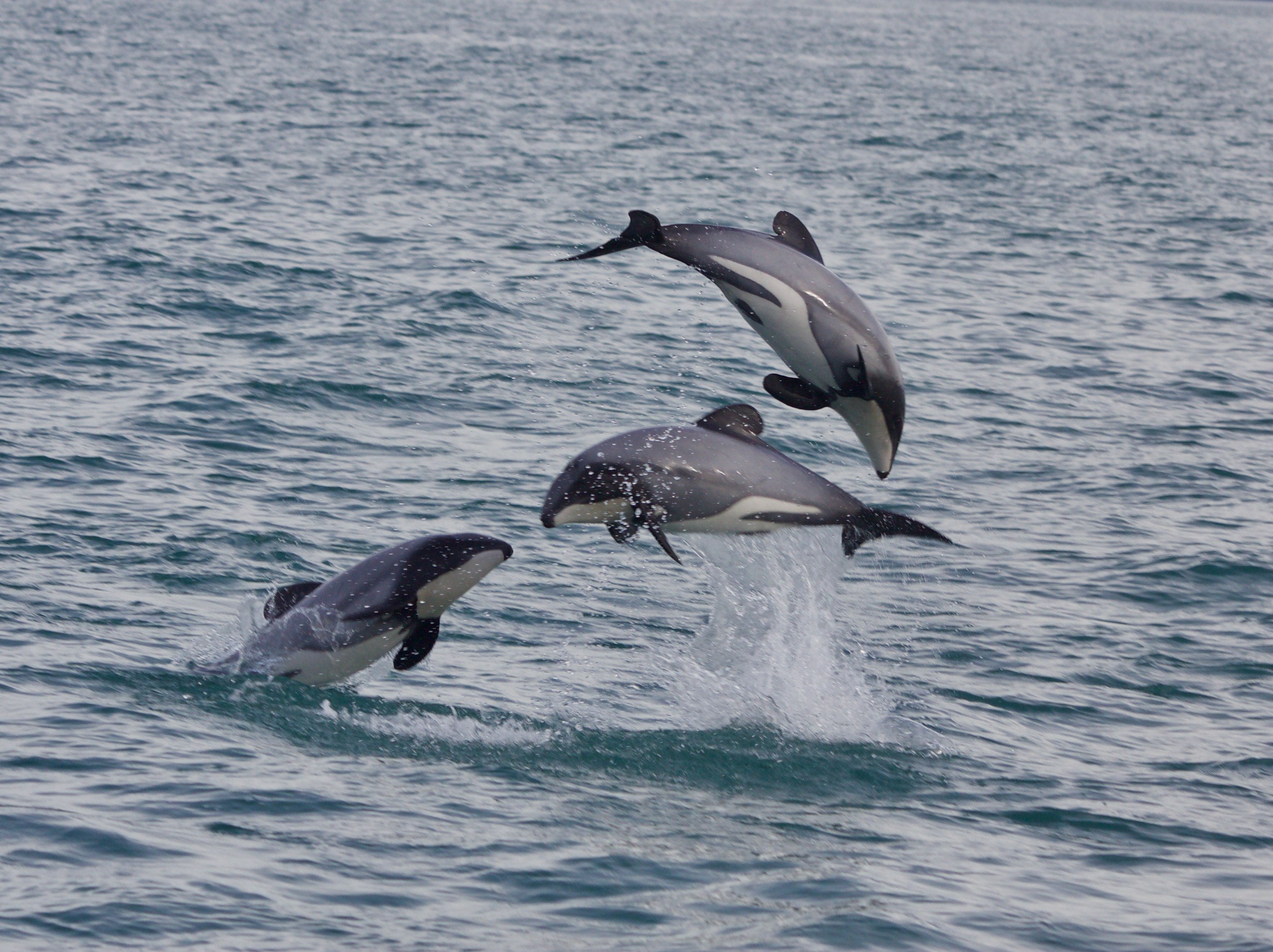Mention cetaceans and your first thought might be of blue whales and orcas, but this group doesn’t consist solely of giants. In the coastal waters of New Zealand can be found a member smaller than the average human: Hector’s dolphin (Cephalorhynchus hectori).
What do Hector’s dolphins look like?
The title may well have clued you in, but one of the Hector’s dolphin’s best-known characteristics is its size – they’re short and stocky, reaching only up to 1.2 to 1.5 meters (4 to 5 feet) at maturity from their tails to their snouts, which have no discernible beak.
Their bodies also feature distinctive grey, white, and black markings, and a super rounded, flat black dorsal fin that’s often been compared to one of Mickey Mouse’s ears.
There’s also a subspecies of Hector’s dolphin, known as the Māui dolphin (Cephalorhynchus hectori maui), which shares those traits, meaning they can look pretty much identical at a glance. On closer inspection, however, Māui dolphins have a longer, wider snout and internally, a slightly bigger skull.
Hector’s dolphin habitat
While both subspecies are found in shallow waters off the coast of New Zealand, they stick to different regions; Māui dolphins live exclusively near the west coast of the North Island, while Hector’s dolphins make their home around the South Island, split into three different populations.
Hector’s dolphin behavior: feeding, socializing, and communication
Speaking of populations, Hector’s dolphins aren’t too fussy about who they hang out with, regularly swapping between pods of between two and 20. When they meet up, it can be quite the spectacle, involving plenty of leaping and tail slapping.
Weeeeeeeee!
Back under the water and on the hunt for food, the dolphins use echolocation to source their prey, chomping down a whole host of different critters from cephalopods (namely the arrow squid) and crustaceans to fish such as red cod, sole, and stargazers.
Why are they called Hector’s dolphins?
If the question hasn’t already crossed your mind at this point, we’ll ask it for you – who the heck is Hector? Not a bloke who owns a bunch of sea creatures, as it turns out, but a man called Sir James Hector.
A “man of science” in 19th century New Zealand, Hector was the first person to give the dolphin a species name back in 1873, dubbing it Electra clancula, though this would go on to change after it was found that name had already been given out to the hourglass dolphin five years previous.
Hector’s dolphin conservation status
Since that time, Hector’s dolphins have gone on to become an endangered species on the IUCN Red List, with the situation for the Māui subspecies particularly fraught; only 54 individuals over a year old are estimated to be left in the wild.
According to the New Zealand government’s Department of Conservation, the main threats to both groups of dolphins include human activity such as fishing, mining, and boat strikes, as well as diseases like toxoplasmosis.
Couple that with having a relatively short lifespan compared to other dolphin species, a low reproduction rate, and being late to reach maturity, and it makes a species than can struggle to recover under such threats.
However, the future may be brighter for Māui subspecies; a study last year found that the average age of the population was shifting younger. While this might mean that the dolphins aren’t living to their typical maximum age, younger populations tend to pop out more babies than older ones, which could help to bring the overall number of the subspecies up.
Source Link: Meet Hector’s Dolphins, One Of The Smallest Dolphin Species In The World
